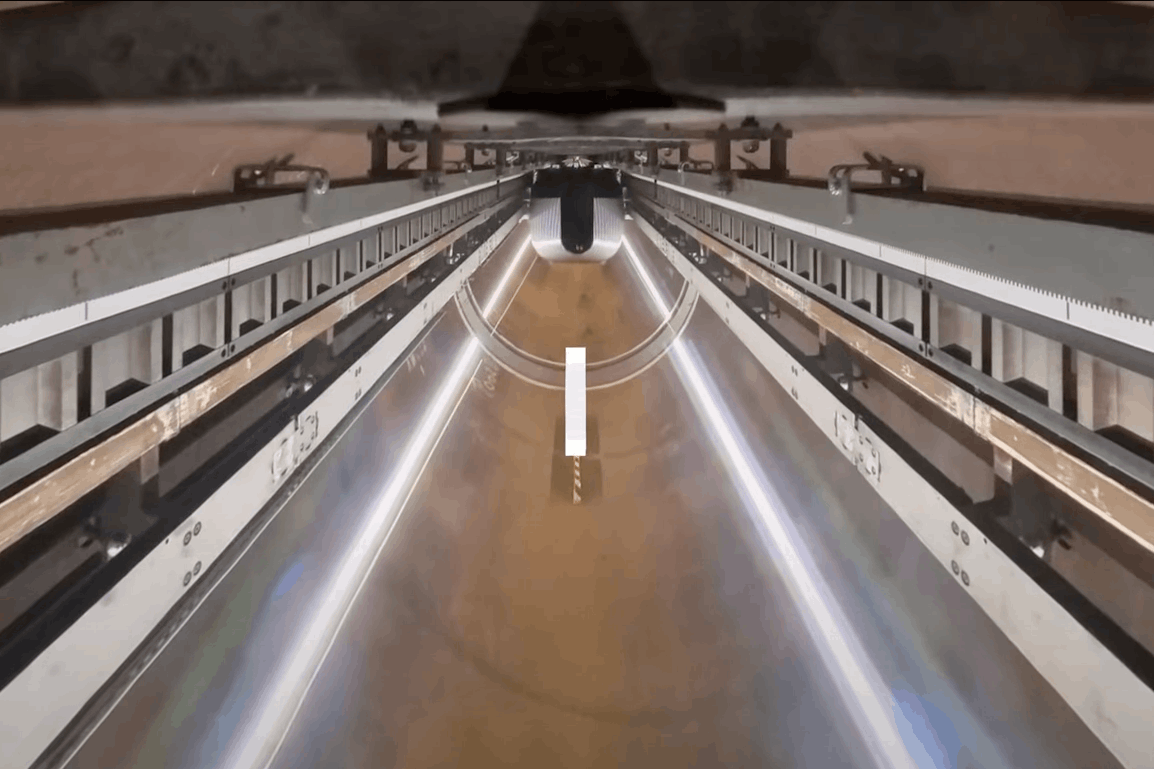He wanted to go and see his children, between Los Angeles and San Francisco, in 30 minutes, instead of six hours by road or an hour's flight (plus boarding time). It's been 12 years since Elon Musk relaunched the idea of a hyperloop, a tube capable of carrying travellers at 1,000 km/h. , formulated in .
At the beginning of September 2024, on the test track of the European Hyperloop Centre (EHC) in Veendam, in the northeast Netherlands, an initial capsule, manufactured and brought by the Technical University of Munich (with 40 partners) reached a speed of 30 km/h, over the first 90 metres of the 200-metre-long installation, with an acceleration of 0.2 G. Further tests will be carried out as construction progresses on this infrastructure, which will reach 420 metres by Christmas.
As Tim Houter, the founder of Hardt Hyperloop, recently explained, "the capsule should be able to reach speeds of 700 kilometres an hour, or roughly the speed of an aeroplane. The test infrastructure is also designed to withstand such speeds, although tests will be limited to around one hundred kilometres per hour." One of the next tests will be a track change, since the infrastructure is Y-shaped, to check that it is possible to travel from the north of Europe to Barcelona or from Paris to Frankfurt in unbeatable times.
The EHC is an open test facility comprising 34 connected Hyperloop tubes with a tube diameter of 2.5 metres. The Hyperloop tubes are made from steel developed and produced by Posco (KR) in collaboration with Tata Steel Netherlands (NL), were assembled into fully prefabricated Hyperloop tubes by contractor Mercon (NL) and were installed by infrastructure company Denys (BE), all partners in the Hyperloop development programme. An initial budget of €10m has been made available, but the investment required to achieve the objectives is likely to be colossal.
The initiative has been welcomed by the Benelux countries, which, along with Luxembourg, recently celebrated their 80th anniversary. A study commissioned by the institution predicts that, as things stand, the Amsterdam-Rotterdam -Antwerp-Brussels and Maastricht-Aachen-Liège routes are the two most promising sections. But there is a whole European network in the pipeline, which passes through Luxembourg in the north-south direction, between Brussels and Strasbourg.

Luxembourg is clearly part of the development plan for this new mode of transport. Source: Hyperloop Development Program, Hyperconnected Europe: a vision for the European Hyperloop network
The document, which had been temporarily withdrawn from the Benelux site because it had not been approved by the Dutch authorities, also highlights the importance of the link (for the moment mainly by air) between Luxembourg and Amsterdam.
There are several other interesting aspects to this document. Firstly, hyperloop is no longer just Musk's latest fashionable gadget, but is spreading all over the planet. Seven companies have formed a global alliance of hyperloop companies: Zeleros (Spain), Transpod (Canada), Swisspod (Switzerland), Nevomo (Poland), Hyperloop TT (USA), Hyperloop One (USA) and Hardt (NL). Not included, however, are India's TUTR Hyperoop and China's Casic.
Then, three clusters emerged: Eindhoven's Brainport, the ASML-Zeiss joint venture and Japan's Maglev. It's hard to say whether Luxembourg has anything to gain from thinking about this, but there are five companies 'based' in Luxembourg: ArcelorMittal, IEE and CircuitFoil, of course, but also BorgWarner, the American automotive supplier based in Hautcharage, which took over from Delphi in 2020 and employs 336 people in its technical centre, with a turnover of €62m in 2022; and Foobot, which specialises in heating, ventilation and air conditioning, based on artificial intelligence.
By 2050, the project's promoters estimate that the European hyperloop network will cover 10,000 kilometres across Europe. A pipe dream, say its detractors, given the difficulties of building these tubes.
Read the original French-language version of this article
